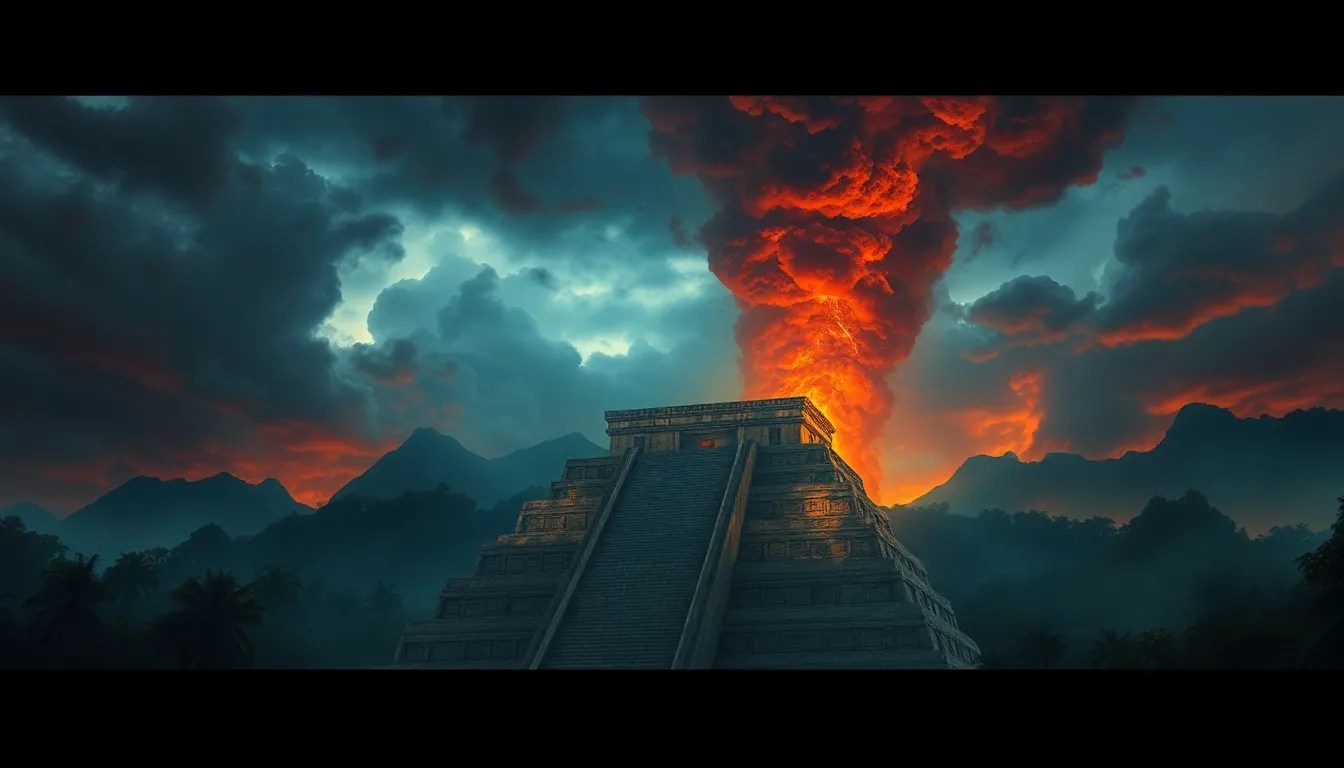Rituals of the Ancients: How the Maya Predicted Natural Disasters
I. Introduction to Mayan Mythology and Natural Disasters
The ancient Maya civilization, known for its remarkable achievements in architecture, mathematics, and astronomy, had a profound relationship with the natural world. Natural disasters such as earthquakes, droughts, and floods were not only events to be feared but were deeply woven into the fabric of Mayan society and mythology. These events were seen as signs from the gods, and understanding them was essential for the survival and prosperity of their communities.
In Mayan culture, mythology served as a crucial lens through which natural phenomena were interpreted. The narratives of gods, creation, and cosmic events provided a framework for predicting and responding to disasters. Rituals and ceremonies were integral to this process, allowing the Maya to seek divine favor and avert calamity.
II. The Mayan Cosmology: Understanding the Universe
The Maya had a complex cosmology that depicted the universe as a multi-layered entity, consisting of the underworld (Xibalba), the earth, and the heavens. Each layer was inhabited by various deities and spirits that influenced the natural world.
Key elements of Mayan cosmology included:
- The Three Realms: The underworld, earth, and sky were interconnected, and events in one realm could affect the others.
- Celestial Bodies: The movements of the sun, moon, and planets were meticulously recorded, and their patterns were believed to correspond with earthly events.
- Cycles of Time: The Maya had a sophisticated understanding of time, seeing it as cyclical, which allowed them to predict seasons and, by extension, natural disasters.
Through this cosmological framework, the Maya believed that celestial movements could herald significant earthly events, including natural disasters.
III. Rituals as a Means of Prediction
Rituals played a central role in how the Maya predicted and responded to natural disasters. These ceremonies were steeped in religious significance and aimed at appeasing the gods, seeking their guidance, and interpreting omens.
Key rituals conducted by the Maya included:
- Offerings: Ritual offerings of food, incense, and blood were made to the gods to gain favor and avert disasters.
- Divination: Various methods, such as interpreting the movements of smoke or the patterns of animal entrails, were employed to foresee potential disasters.
- Calendar Ceremonies: Specific rituals were tied to the Mayan calendar, particularly during significant dates that aligned with celestial events.
These practices were not only about prediction but also about preparation, fostering a sense of community resilience in the face of adversity.
IV. The Role of Priests and Astronomers
Priests and astronomers held vital roles in Mayan society, particularly in interpreting omens and predicting disasters. Their expertise was essential for guiding the community through uncertain times.
The responsibilities of priests included:
- Interpreting Omens: Priests were trained to read signs in nature and celestial events, providing insight into potential disasters.
- Conducting Rituals: They led ceremonies aimed at appeasing the gods and invoking protection from calamities.
- Advising Leaders: Priests provided counsel to rulers on the timing of agricultural activities and military campaigns based on their interpretations.
Mayan astronomers contributed to disaster predictions through their meticulous observations of celestial phenomena, linking them to earthly occurrences. Their calculations were crucial for understanding the timing and nature of natural disasters.
V. Key Natural Disasters and Their Ritual Responses
The Maya experienced various natural disasters, each prompting specific rituals and responses. Understanding these case studies sheds light on the practical application of their beliefs.
Examples of key natural disasters include:
- Earthquakes: Rituals often involved communal prayers and offerings to the earth gods, seeking stability and protection.
- Droughts: In times of drought, the Maya performed rain ceremonies, invoking the rain god Chaac through elaborate rituals and offerings.
- Floods: Flood responses included rituals to appease water deities and ensure safe passage for communities affected by rising waters.
Rituals were performed before, during, and after these events to mitigate the effects and seek forgiveness from the gods.
VI. The Influence of Agriculture on Disaster Prediction
The Maya’s agricultural practices were intricately linked to their understanding of natural disasters. The cyclical nature of planting and harvesting was essential for food security and community survival.
The relationship between agricultural cycles and natural disasters included:
- Seasonal Rituals: Planting and harvest ceremonies were timed with astronomical events, believed to influence crop yield and protect against disasters.
- Drought Preparedness: Rituals to invoke rain were crucial during dry seasons, as droughts could lead to food shortages.
- Flood Management: Ceremonies were also conducted to honor water deities, ensuring that rains fell at the right time to avoid flooding.
Through these agricultural rituals, the Maya developed a keen awareness of their environment, helping them to mitigate the impact of natural disasters.
VII. Modern Implications of Ancient Practices
Ancient Mayan rituals hold significant relevance in our contemporary understanding of natural disasters. Their methodologies offer insights that can inform modern disaster preparedness and response strategies.
Key implications of ancient practices include:
- Community Resilience: The communal aspect of Mayan rituals highlights the importance of collective action in disaster response.
- Integrating Spirituality: Acknowledging the spiritual dimensions of disaster response can enhance community support and cohesion.
- Learning from the Past: Studying Mayan rituals can provide modern societies with valuable lessons on sustainability and environmental stewardship.
By understanding the wisdom embedded in Mayan mythology, contemporary cultures can better prepare for and respond to natural disasters.
VIII. Conclusion: The Legacy of Mayan Predictions
The rituals practiced by the Maya reveal a profound understanding of their environment and the forces that governed it. Through their ceremonies and beliefs, they sought to predict and mitigate the impact of natural disasters, demonstrating resilience and adaptability.
The legacy of Mayan methods continues to influence modern approaches to disaster prediction and response, reminding us of the enduring connection between culture, spirituality, and the natural world. As we face increasing environmental challenges, the lessons of the ancients remain relevant, offering guidance on how to navigate the complexities of our own times.



